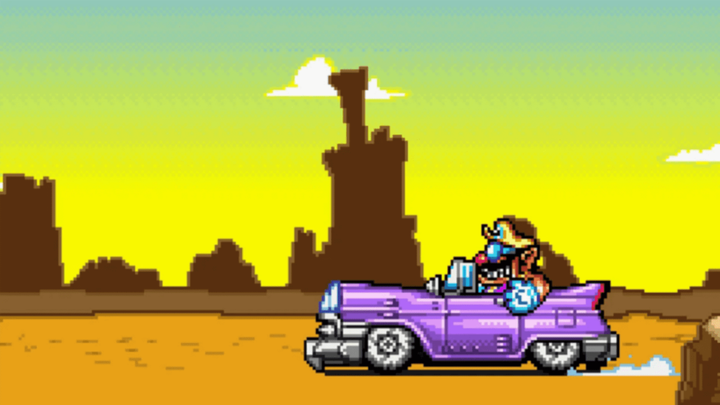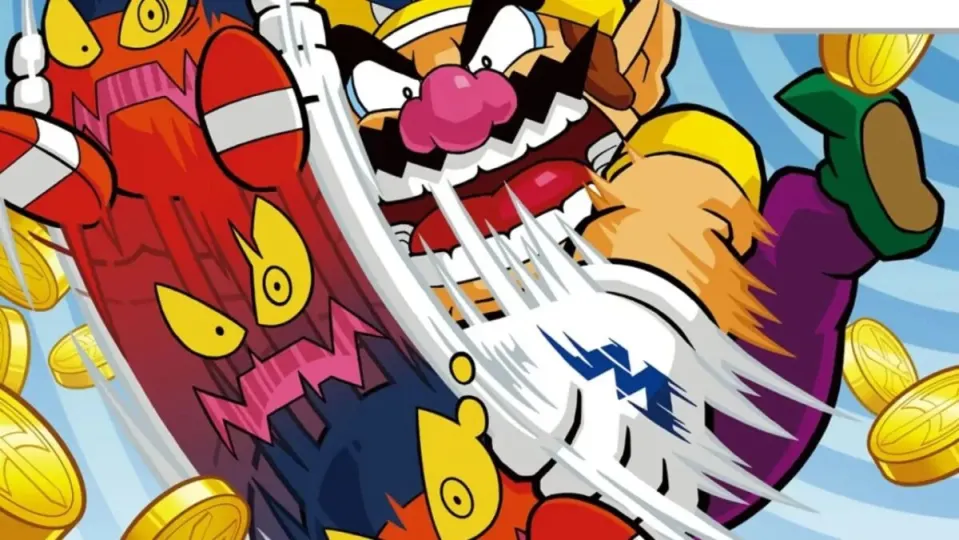Neither Franklin from ‘GTA V’, nor Kid Icarus, nor Bayonetta, nor anything like that: the most unlikely hero in video games eats garlic for breakfast, farts, is overweight and likes money more than a politician. Wario is the second most important antagonist in the ‘Super Mario Bros’ saga and the only one to have had not one, but two sagas of his own. And although ‘Wario Ware’ continues every so often to the delight of all of us who enjoy two-second mini-games, there is another one that got lost in the limbo of the sagas: What became of ‘Wario Land’?
March, march, march, the world of Wario
The first appearance of Wario, with a physical appearance that some say comes from Spike, the character from ‘Wrecking Crew’ who in Japan was known as Blackie (not anymore, whatever), was as the final bad guy of the wonderful ‘Super Mario Land 2: 6 Golden Coins’, one of the best games in the history of Game Boy 30 years ago. But the funny thing is that first came the name (a joke between Mario’s own name and the Japanese word “warui”, that is, “bad”) and then everything else. First came the puns, as it should be.
The funny thing is that in the guide of that cartridge his relationship with the hero of the red cap even had an inside story: Mario and Wario were childhood friends who parted ways. It’s also true that it was indicated that his favorite food was pancakes instead of garlic, so it may not have been too well thought out. The third part of ‘Mario Land’ wanted to break away from everything and, to do so, completely forgot about the plumber to focus on the novel powers of this character who wanted to get rich at all costs.

Wario Land: Super Mario Land 3′ is possibly the most fun of this strange trilogy for Game Boy: where Mario jumped and ran, Wario used powers and investigated every place in search of a secret location, giving a new layer to the screens. A myth had been born… That was on the verge of dying the following year. And it was the biggest failure in the history of the Big N: does the Virtual Boy ring any bells?
Virtual boy
The story is well known: with PlayStation and Sega Saturn about to come out, Nintendo couldn’t afford to get stuck with the SNES. It needed something more, and the Nintendo 64 wasn’t ready yet. Unfortunately (seen in perspective), Gunpei Yokoi had a little toy called Virtual Boy that, who knows, could be a hit: it allowed you to play in three dimensions… in exchange for wearing strange glasses that were impossible to hold and being willing to see only in red.

As you can imagine, it was no match for Sony and Sega: although Nintendo spent 25 million on promoting it, it only sold 770,000 units and by the end of its life it had released 22 games (8 exclusive to Japan and 3 to the United States). And among the list of ignonimia was, exactly: ‘Virtual Boy Wario Land’, which in spite of everything was considered the best title of the console. The shock was not big enough for the Game Boy Color in 1998 not to celebrate the first real sequel of the saga: ‘Wario Land II’, which had the novelty of not being able to die… because what matters is to keep going at all costs.
Wario must rescue his treasure in a long, fun and unique game, one of the pillars of the Japanese company’s invention to not yet retire its portable. In 2000, ‘Wario Land 3’ laid the foundations of the franchise and ‘Wario Land 4’ brought them to Game Boy Advance, with the novelty that now the character could “die” (or faint, at least). Surprisingly, its visual style is overwhelming and, undoubtedly, the best of the portable saga. From here, the turbulence begins.

Minigames and platforms
Wario became Nintendo’s default rogue character. If they needed someone to star in stupid mini-games, he was there with the fabulous ‘Wario Ware’ franchise. He raced go-karts, played golf and tennis, rolled dice on a giant board, beat everyone up in ‘Super Smash Bros Melee’. And, although we don’t like to admit it, it lost some of its identity along the way.
The next platformer tried to pick up where ‘Super Mario Land’ (for handheld) and ‘Super Mario World’ (for home console) left off: ‘Wario World’ was released for GameCube in 2003 and sold only about 390,000 units worldwide. By comparison, ‘Super Mario Sunshine’ snuck in 6.28 million and ‘Luigi’s mansion’ about 3.33. Sadly, it was no longer innovative nor did they know what to do with the character in three dimensions, resembling more of a beat-em-up than a platformer. Nintendo put the saga aside to let it breathe for four years.
In 2007 and 2008, Wario gave it all again with a last desperate attempt: on Nintendo DS, with the somewhat discouraged ‘Wario: Master of disguise’, which didn’t work at any level with a very strange story, and on Nintendo Wii with the incredible ‘Wario Land: Shake It! which had a beautiful hand-drawn art style, as if it were a cartoon: more than 2000 frames formed the actions of the character, whose plot was again focused on earning a lot of money, a return to what always worked of the same that came too late. If you can, try it! It’s hilarious despite making the entire gameplay system rely on moving the Wii Remote. That’s what it was fifteen years ago.
‘Shake It!’ sold a million or so copies worldwide, but it wasn’t enough to bring the platforming saga back to the forefront, thus condemning Wario to being locked away in ‘Wario Ware’ and being a deluxe sidekick in any Mario sports game. It looks like we won’t be seeing him jumping and getting powers again for a good period of time, though with Nintendo you never know: what if it gave him another chance on the Switch? Hey, he can’t complain either: he’s more than Waluigi ever had.


